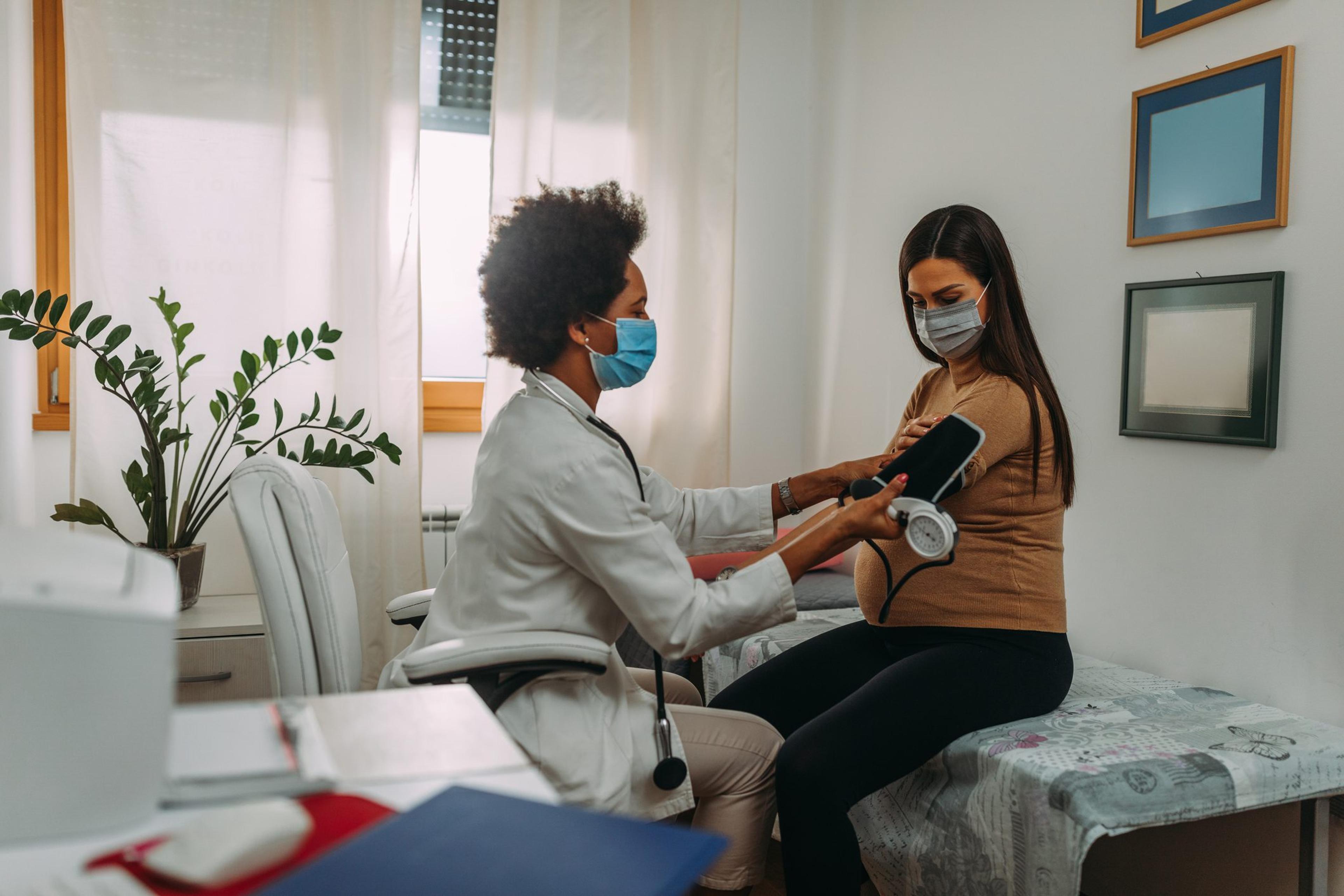
Over the last decade, the maternal mortality rate has risen at an accelerated pace. While there are many contributing factors to this issue, a chronic condition like preeclampsia has become a common complication. According to the Centers for Disease Control and Prevention, preeclampsia affects about one in every 25 pregnancies in the U.S. Moreover, preeclampsia can develop quickly, and its symptoms are synonymous with pregnancy – making it extremely important to be mindful of the warning signs for the safety of both you and your baby. Preeclampsia is a complication that arises due to high blood pressure and protein in the urine. Around 20 weeks of gestation is when symptoms typically appear, and if left untreated, preeclampsia can lead to a more serious condition like eclampsia or even become life-threatening to both mom and baby.
Symptoms of preeclampsia
While many of the symptoms of preeclampsia are similar to general pregnancy symptoms, it is important to remain vigilant and bring your concerns to your doctor if they arise.
- Shortness of breath
- The sudden appearance of swelling on the face or hands
- Nausea or vomiting
- Changes in vision
- Temporary loss of vision
- Blurred vision
- Sensitivity to light
- Severe headaches
- Pain in the upper belly (under the ribs on the right side)
- Excess protein in the urine (usually discovered during a routine exam)
Risks factors
You may be at a higher risk for preeclampsia if one or more of the following apply to you:
- Preeclampsia in a previous pregnancy
- Pregnancy with your first baby
- Kidney disease
- Family history of preeclampsia
- Autoimmune disorders
- Chronic hypertension
- Pregnant with more than one baby
- Maternal age over 40
- Obesity
- In the use of in vitro fertilization
- Type 1 or Type 2 diabetes
Postpartum preeclampsia
While this condition is rare, it still is possible. Postpartum preeclampsia is when preeclampsia occurs right after birth. Typically, 48 hours after delivery, however, a diagnosis can occur up to six weeks later. While postpartum preeclampsia is more serious than preeclampsia, the symptoms of both conditions are similar. It is advised that you inform your health care provider immediately if you have symptoms of postpartum preeclampsia as it is urgent.
Diagnosis and treatment
The diagnosis of preeclampsia involves a combination of tests for mom and baby. Most likely, your doctor will check for high blood pressure. Other tests include a fetal ultrasound, non-stress tests, or a biophysical profile. The main treatment for preeclampsia is to either manage the symptoms until it is safe to deliver the baby, or to deliver the baby early. The gestational age of the baby, as well as the severity of preeclampsia, will determine the treatment plan for the condition. In some more severe cases, medication will be prescribed mainly to lower the blood pressure, aid in the baby’s lung development, and/or to prevent seizures.
Prevention
Preeclampsia can be difficult to prevent or predict. Maintaining a healthy lifestyle is a good best practice for pregnant individuals to reduce their risk of preeclampsia, including exercising, eating healthy and checking your blood pressure at home. Many local grocery stores and pharmacies are equipped with blood pressure devices that offer a convenient way to check for added peace of mind. Photo credit: Getty Images Read on: Kevin Fischer Lost His Son to Suicide. Now He’s Dedicated to Helping Families Avoid the Same Trauma Skin Cancer: Start Protecting Yourself Today Making Smart Choices During Open Enrollment: The Benefits of an HSA





